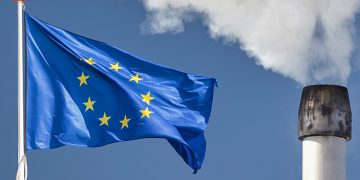On 21 August 2017 one of the deadliest accidents in the history of US Navy took place. As the US warship ‘John S McCain’ was sailing in the Singapore Strait, one of the busiest waterways in the world, it collided with the Liberian-flagged chemical tanker ‘Alnic MC’. The result? Ten sailors of the US warship lost their lives, while 48 more were injured, in what is considered an example of lack of effective operational oversight.
Accident details: At a glance
Type of accident: Collision
Vessel(s) involved: ‘John S McCain (warship), ‘Alnic MC’ (chemical tanker)
Date: 21 August 2017
Place: Singapore Strait
Fatalities: 10
Damage: Property damage exceeded $1.2 M.
Ten sailors died on board the US warship ‘John S McCain’, while 48 sustained injuries, as ‘John S McCain’ collided with the chemical tanker ‘Alnic MC’ in the Singapore Strait, on 21 August 2017. There were no injuries to the crew of the Alnic MC, while property damage due to the collision exceeded $1.2 M.
An official investigation report launched by the NTSB, came to confirm previous conclusions of the US Navy investigation, claiming lack of compliance with procedures and failures by watchstanders.
What is more, Singapore’s Transport Safety Investigation Bureau (TSIB) released a report as well, determining that the USS John S McCain made a sudden turn to Port (left) into the path of Alnic MC.
The incident
In the early morning on 21 August 2017, the US Navy destroyer John S McCain was proceeding in the westbound lane of the Singapore Strait Traffic Separation Scheme (TSS) bound for Singapore.
At about 0520, the John S McCain commanding officer thought that the helmsman might become overwhelmed and ordered a second watchstander – a lee helmsman – to control the ship’s propeller thrust.
Shortly after, the helmsman reported he had lost control of steering and the vessel began to slowly turn to port.
At this time, the tanker Alnic MC was transiting in the westbound lane of the TSS, about three tenths of a mile off the destroyer’s port side in a speed of about 9.5 knots.
[smlsubform prepend=”GET THE SAFETY4SEA IN YOUR INBOX!” showname=false emailtxt=”” emailholder=”Enter your email address” showsubmit=true submittxt=”Submit” jsthanks=false thankyou=”Thank you for subscribing to our mailing list”]
The master of the Alnic MC, who had control of maneuvering of the ship, noted the John S McCain as it began its turn to port and initially assumed that the Navy ship would pass between his vessel and another vessel ahead of the Alnic MC.
As the destroyer continued to turn into the path of his ship, he became increasingly concerned.
At 05:23:44, he moved the Alnic MC’s engine order telegraph from full ahead to half ahead in order to slow his vessel. He told investigators that he thought he put the engine order telegraph at engine stop, but upon reviewing engine data after the accident, he learned that he had ordered a reduction to half ahead.
Once positive control of the John S McCain’s steering was reestablished in aft steering, watchstanders moved the rudders to 15 degrees to starboard, as ordered from the bridge.
However, this action and the action of the Alnic MC master to slow his vessel were not enough to prevent a collision, and, at 05:23:58, the bulbous bow of the tanker struck the port side of the John S McCain.
The impact breached the hull of the John S McCain in a berthing compartment where crewmembers were sleeping, killing 10 sailors.
About 3 minutes had elapsed between the reported loss of steering on the John S McCain and the collision.
Probable cause
The official report by NTSB determined the probable cause of the collision was a lack of effective operational oversight of the destroyer by the US Navy, which resulted in insufficient training and inadequate bridge operating procedures.
Contributing to the accident were the John S McCain bridge team’s loss of situation awareness and failure to follow loss of steering emergency procedures, including the requirement to inform nearby vessel traffic of their perceived loss of steering.
The NTSB concluded that during the process of shifting thrust control, a John S McCain watchstander unintentionally transferred control of steering from the helm to the lee helm station which resulted in a perceived loss of steering by the John S. McCain’s helmsman, however, steering control was available at all times in the accident sequence
Also contributing to the accident was the operation of the steering system in backup manual mode, which allowed for an unintentional, unilateral transfer of steering control.
The NTSB…concluded in its report that the inability to maintain course due to a perceived loss of steering, the mismatch of port and starboard throttles producing an unbalanced thrust, and a brief but significant port rudder input from after steering combined to bring the John S McCain into the path of the Alnic MC. The decision to change the configuration of the John S McCain’s critical controls while the destroyer was in close proximity to other vessels increased the risk of an accident
…NTSB said in an official statement.
In addition, further safety issues played a crucial role in the collision between the two ships. As the report states, these are:
- The decision to transfer the location of thrust control on board the John S McCain while the vessel was in a congested waterway;
- The lack of very high frequency radio communications between the vessels;
- The automatic identification system data transmission policy for Navy vessels;
- The procedures for the transfers of steering and thrust control onboard the John S McCain;
- The training of Navy bridge watchstanders;
- The design of the destroyer’s Integrated Bridge and Navigation System;
- Navy watchstanders’ fatigue;
- Navy oversight of the John S McCain.
US Navy: Collision could have been avoided
In its own report, the US Navy said that the collision between John S. McCain and Alnic MC was avoidable and resulted primarily from complacency, over-confidence and lack of procedural compliance.
A major contributing factor to the collision was sub-standard level of knowledge regarding the operation of the ship control console
It explained that McCain’s commanding officer disregarded recommendations from his executive officer, navigator and senior watch officer to set sea and anchor watch teams in a timely fashion to ensure the safe and effective operation of the ship.
Regarding procedures, no one on the Bridge watch team, including the commanding officer and executive officer, were properly trained on how to correctly operate the ship control console during a steering casualty.
Additionally, watchstanders operating the John S McCain’s steering and propulsion systems had insufficient proficiency and knowledge of the systems.
The crew was unprepared for the situation in which they found themselves through a lack of preparation, ineffective command and control, and deficiencies in training and preparations for navigation
said the report.
Singapore: Sudden turn of US warship the cause of collision
Singapore’s Transport Safety Investigation Bureau (TSIB) analyzed the incident, noting that the collision happened because of a sudden turn to Port by John S McCain, which caused it to head into the path of Alnic MC.
JSM’s sudden turn to Port was due to a series of missteps that took place after a transfer of propulsion controls, which led to a confusion as to which station had steering control, and an unintentional reduction of the Port engine throttle which increased the rate of JSM’s turn to Port
TSIB explained.
Recommendations
Based upon its investigation of the collision, the NTSB issued seven safety recommendations to the US Navy seeking:
- Issuance of permanent guidance directing destroyers equipped with the Integrated Bridge and Navigation System to operate in computer-assisted steering modes, except during an emergency.
- Issuance of guidance to crews emphasizing the importance of appropriate use of very high frequency radio for safe navigation.
- Ensuring design principles in ASTM International Standard F1166 are incorporated when modernizing complex systems such as steering and control systems within the Integrated Bridge and Navigation System.
- Revision of written instructions for bridge watchstanders on destroyers equipped with the Integrated Bridge and Navigation System to include procedures for shifting steering and thrust control between all bridge stations.
- Revision of Integrated Bridge and Navigation system technical manuals to include a description of and procedures for ganging and unganging throttles.
- Revision of training standards for helmsman, lee helmsman and boatswain’s mate of the watch for destroyers equipped with the Integrated Bridge and Navigation System to require demonstrated proficiency in all system functions including transfer of steering and thrust control between all bridge control stations.
- Instituting Seafarers’ Training, Certification and Watchkeeping Code rest standards.
Court room developments
As it is natural, such a significant accident, which made the headlights globally, led to a series of episodes in the court rooms.
At first, the US Navy charged Cmdr. Alfredo Sanchez, who commanded John S. McCain, with negligent homicide in 2018. However, the US Navy later dropped its charge, and the commanding officer would face only dereliction charges at a special court-martial.
Nevertheless, the former commanding officer of the warship pleaded guilty to a single charge of negligence for his role in the incident. He was sentenced to a punitive letter of reprimand and forfeiture of $6,000 in pay.
Specifically, as part of an agreement to plead guilty, Cmdr. Alfredo J. Sanchez admitted he did not set the proper watch team for the busy shipping lane the ship was entering, or take proper action when the bridge crew lost control of the ship because of a poor understanding of the helm controls.
Better training simulators to prevent similar incidents
Despite the severity of the collision, the incident made the US Navy review its training simulators, in order to upgrade them.
As a matter of fact, building better training simulators for sailors on surface ships is a key initiative that the US Navy is carrying out. This comes as the Navy implements recommendations following the deadly USS John S. McCain collision, according to Adm. William Moran, vice chief of naval operations.
During a maritime security discussion at the Center for Strategic and International Studies, in Washington, Adm. William Moran said he is optimistic with the progress of the implementation.
He also stated his disappointment about the simulators that were used by the surface force, in comparison to what he was used to as a naval aviator.
Moreover, one of the key lessons from the 2017 collision was poor communications and teamwork between the ship’s bridge and the combat information center. In this aspect, the new simulators will help the instructors teach basic communications, as well as some important skills.
However, Mr. Moran noted that there is not enough capacity to do this as much as needed. Namely, he wants realistic simulators for every ship class or at least be able to reconfigure one to train a sailor for any ship that they might work aboard.
Currently, the US Navy is creating new buildings in San Diego, Calif., and Norfolk, Va., which will include several simulators to enable sailors undergo more training.
LEARN FROM THE PAST: Read in this series
[jnews_carousel_3 show_nav="true" number_post="100" include_tag="2107"]
Did You Know
This accident shocked the shipping community, as it came only two months after another deadly collision involving a US warship.
On 17 June 2017, the ‘USS Fitzgerald’ collided with a NYK container ship off Shimoda in Shizuoka prefecture, Japan, killing seven US Navy sailors.
































































